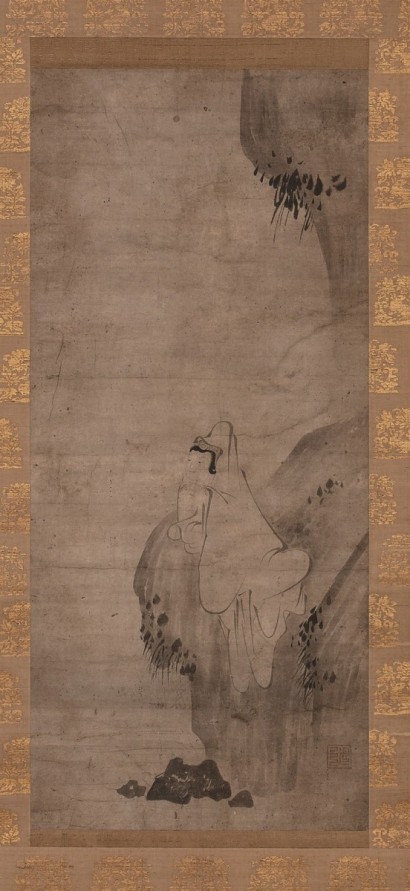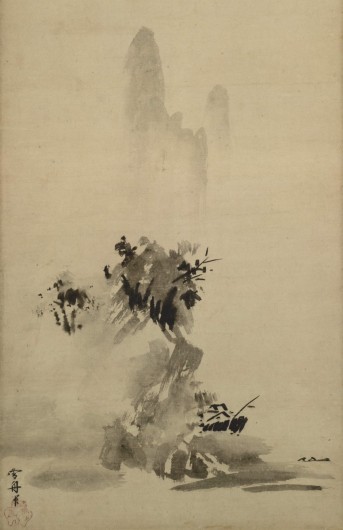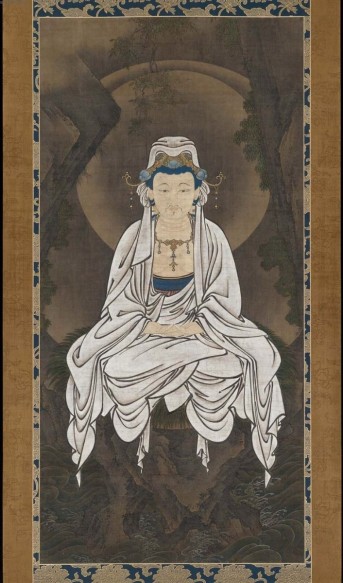Attributed to Shugen (fl. 1469–1521), Japan, Muromachi period; hanging scroll, ink on paper; 32 ¼ x 14 5/16 in.; The Frances Lehman Loeb Art Center, Vassar College, Purchase, gift of Mr. and Mrs. Leo Steinberg (Dorothy Seiberling, class of 1943); Elizabeth Woodcock, class of 1925; Bertha Mather McPherson, class of 1928 and Philip Johnson, by exchange, 2014.29.
The minimal background and unembellished garments of the White-robed Kannon are typical of Zen Buddhist art, which was imported into the country from China after the 12th century. A feminized Kannon displays a tender smile while one hand points beyond perceivable space. Her robe is freely wrapped around her body. The style and composition of this Japanese painting follow Chinese precedents. Kannon’s sweet facial expression evokes intimate and direct emotions in the viewer. This painting exemplifies Japanese aesthetic developments in the simplified imagery and dexterous brushwork. It is an artistic manifestation of the “open distance, nothing sacred” doctrine in Zen Buddhism. JS






